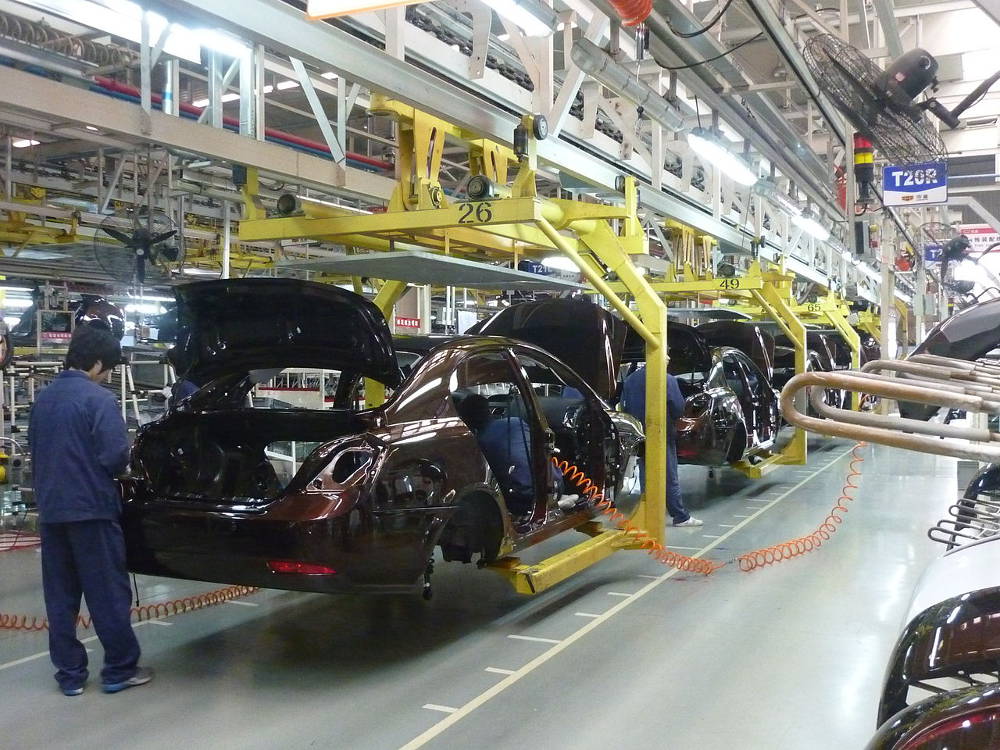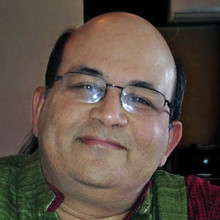[Photograph: Geely assembly line in Beilun, Ningbo by Siyuwj under Creative Commons]
Innovation can be driven by different stimuli—competition, inventive passion, a sheer need to survive. But in some industries, the biggest driver is regulatory changes.
The automotive industry has been facing such a situation over the last two decades. While the fact that automobiles are major contributors to environmental pollution is hardly new, highly visible signs of pollution such as smog, low visibility and respiratory ailments have given a sense of urgency to the need to control vehicular emissions. This has manifested itself in city-wide initiatives like the odd-even scheme, localised events like “no car” days, and major changes in regulation like the government’s recent announcement of an accelerated jump from Bharat Stage-IV (BS-IV) to BS-VI norms, leapfrogging BS-V altogether.
To understand what this means for innovation, I attended the annual Automotive R&D Trends meet convened by the Confederation of Indian Industry (CII) at Chennai recently. Amid Indian industry’s muted efforts at R&D, the automotive and transportation sector stands out as an exception. It is the largest spender on R&D after the pharmaceutical sector and we have seen Indian R&D and engineering translated into impactful outcomes like the Digital Twin Spark ignition (DTSi) technology that underlies Bajaj’s very successful Pulsar bike, the Tata Nano, and the Mahindra Scorpio. The automotive sector is the only arena in which CII convenes an annual R&D conference; this year’s was the eighth in a series. As industry conferences go, it was well attended by a knowledgeable audience.
Not surprisingly, the accelerated adoption of BS norms announced recently and quickly followed up by a gazette notification was the main topic of discussion. Emission control is the mantra of not only the oil companies (who have to make huge investments to meet the 10ppm sulphur norms of BS-VI) and vehicle original equipment manufacturers (OEMs), but tire and lubricant manufacturers as well.
Several interesting facets emerged from the deliberations.
The focus of the BS-VI norms is on NOX (short for nitrogen oxide), sulphur and particulates. Control of these pollutants depends primarily on improving the input fuels and processing the waste products that come out of the engine.
One speaker described this post-processing as attaching a small chemical factory to your engine. The additional space occupied by this “factory” may be comparable to the space already occupied by the engine.
Cars have become more electronic these days and this trend will continue as electronic control units will be required to monitor and manage the increasing complexity in the engine and the rest of the vehicle.
Serviceability will become a bigger challenge. The addition of the “chemical factory” will make access complex. More sophisticated skills will be required to repair a vehicle in the future. The era of the neighbourhood workshop may soon be over.
Unlike in the past where tighter emission norms went hand-in-hand with better fuel economy because the focus was on reducing carbon emissions, lowering NOX emissions will reduce fuel economy as fuel will have to be burnt to create the required temperatures for effective neutralisation of the non-carbon emissions.
One important dimension of the new emission norms is the emphasis on meeting the norms at all times, not just under ideal testing conditions. Hence, the development of test routines that reflect the drive conditions of vehicles is currently an important area.
Developing these test routines can result in interesting new discoveries. I was intrigued by the fact that the throttle patterns of a London public bus and an F1 racing car are similar, though of course at very different speeds. As a result, flywheel-based energy recovery methods used in F1 are now finding their way into the bus industry. Combined with a GPS, this allows a bus traversing Oxford Street in London to automatically use stored electrical energy rather than cause pollution in this crowded area.
New engines that meet BS-VI standards will need BS-VI fuel wherever they go, so the whole country will have to move to BS-VI simultaneously unlike in the case of the earlier BS standards where partial implementation was possible. (While the metros moved to BS-IV some time ago, the rest of the country is yet to catch up.) However, the move to BS-VI will not pose a problem for existing vehicles because backward compatibility will be maintained, i.e., old engines will continue to work with BS-VI fuel. Of course, the benefits of the shift to BS-VI fuel will be muted to start with as only a small proportion of the engines (only new vehicles) will be designed for BS-VI standards.
In spite of all the advances, the internal combustion (IC) engine has proved to be extremely persistent/enduring. According to one estimate presented at the conference, nearly two-thirds of car engines will still be IC engines by 2035.
The rapid adoption of new technologies has not come a day too soon. Citing predictions by the Organisation for Economic Co-operation and Development (OECD), one of the speakers mentioned that passenger transportation and goods transportation requirements are expected to increase three-fold and four-fold in non-OECD countries, respectively, by 2050 (from 2010). But, while the emissions may be brought down by the new technologies, it’s difficult to contemplate what the roads will be like with such an increase in volume of vehicles. Clearly, some fundamental changes in the way we live and manage our economic activities will have to be contemplated.
But will this happen? The conference was dominated by engineers and as one might expect they were all keyed up about the challenges of the future, and confident that they would be able to solve them through new technology. In the 1970s, the Club of Rome, a global think tank, made dire predictions about the future of the planet. The period of prosperity that followed led to an increasing contempt towards such doomsday scenarios. But the hard data regarding global warming and its visible manifestation in more volatile weather conditions certainly raise questions about the future of this engineering-driven approach. It may be useful for CII to invite social scientists, futurologists and climate scientists to their future conferences!
While this focus on new emission norms is urgent and important, competition is also intense. Developing new cars to be in tune with customer expectations and competitor offerings has become a challenge. Consumer tastes change quickly and a given model has a short lifecycle. We have seen this in SUVs in India. The Renault Duster, Mahindra SUV 500 and Ford Ecosport all did well but for six-eight months, maybe a year at most, until a new and fresher offering came into the market from a competitor. Yet, we know that making a car has major fixed costs in dies and tooling, and recovering these costs needs volumes. But consumers are looking at a car more and more like the way they buy a mobile phone—something they want to change often. Reconciling these tradeoffs will be a major managerial challenge, and calls for simultaneous innovation in design, production and marketing.
Established automobile manufacturers have to simultaneously run with three horses—the models based on existing technology (though, of course, keeping up with the advances in emission norms) with all the attendant competitive challenges; the technology that is already established but only partially diffused (like hybrids); and the next generation vehicles (electric vehicles, fuel cells, etc.). Not surprisingly, specialised firms like Tesla Motors have emerged to disrupt the next generation vehicle arena. And then, there’s the completely different business model, the driverless car, promoted by tech companies like Google and Apple that could completely upend the automobile industry as we know it today.
Clearly, exciting yet complex times are ahead for innovation in the automotive sector.



